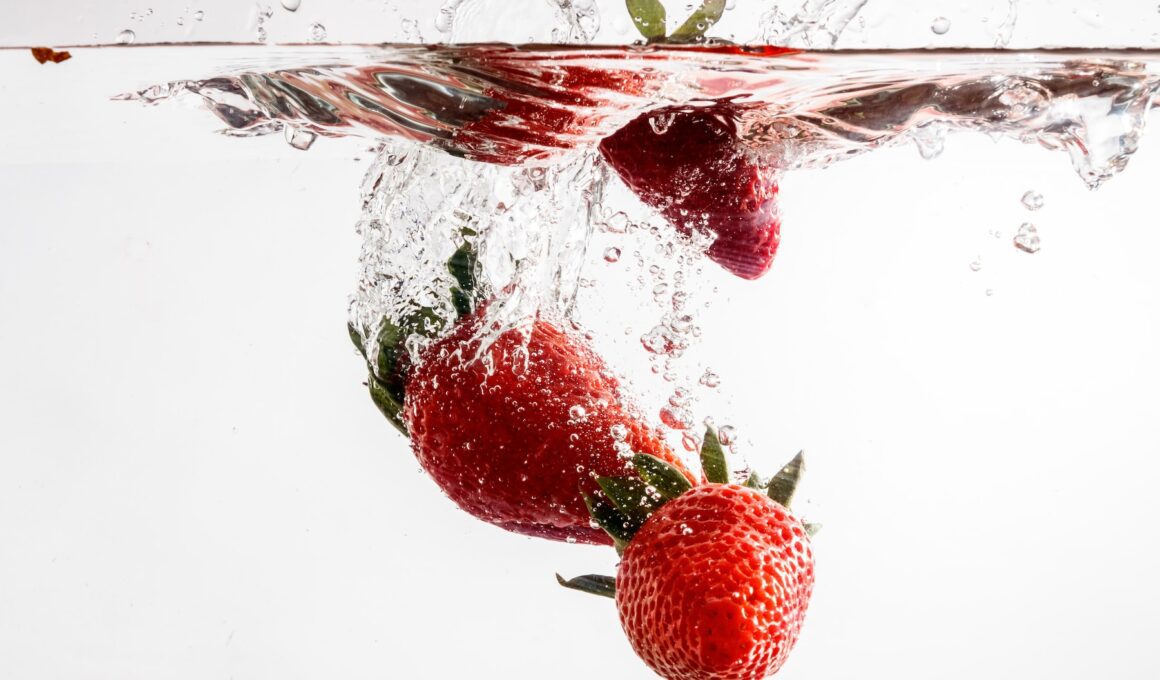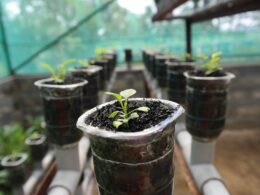Are you a strawberry lover? Do you often wonder how you can get the most delicious and nutritious strawberries possible?
One question that may come to mind is whether strawberries are better grown in soil or hydroponics. In this article, we will explore the pros and cons of both methods and compare the flavor and nutrient content of strawberries grown in soil versus hydroponics.
As you may know, soil-based methods have been used for centuries to grow plants, including strawberries. However, in recent years, hydroponic methods have gained popularity, especially in urban areas where space is limited.
While both methods have their advantages and disadvantages, it’s important to understand the differences before deciding which method is best for you. So, let’s dive in and explore the differences between soil-based and hydroponic methods of growing strawberries.
The Pros and Cons of Soil-Based Methods
The upsides and downsides of using soil-based techniques are worth considering.
Soil-based methods have been used for centuries to grow fruits and vegetables. One of the advantages of using soil is that it’s a natural medium that contains all the nutrients that strawberries need to grow. This means that you don’t need to worry about adding additional nutrients to the soil.
However, using soil-based methods can be costly, especially if you need to purchase top-quality soil. You also need to factor in the cost of pest control, as soil-based methods are more susceptible to pests and diseases. You may need to use pesticides or other chemicals to keep pests under control, which can be harmful to the environment and your health.
If you’re considering using soil-based methods to grow strawberries, it’s important to weigh the pros and cons carefully. While soil-based methods provide a natural medium for growing strawberries, they can be costly and require regular pest control. If you’re willing to invest time and money into pest control, soil-based methods can be an effective way to grow strawberries. However, if you’re looking for a more cost-effective and environmentally-friendly method, hydroponics may be a better option.
The Pros and Cons of Hydroponic Methods
Let’s weigh the advantages and disadvantages of growing strawberries through a soil-free, water-based system called hydroponics.
One benefit of hydroponics is that it allows for vertical farming, which means crops can be grown in a smaller space. This system also uses automation technology to control water and nutrient levels, which can lead to higher yields and a more efficient use of resources. Plus, hydroponics eliminates the need for soil, which can carry diseases and pests.
However, hydroponics also has some drawbacks. It requires a significant upfront investment in equipment and technology, which can be expensive for small-scale farmers. Additionally, the water and nutrient solutions used in hydroponics must be carefully monitored and adjusted, which can be time-consuming and require specialized knowledge. Finally, if the system fails or there is a power outage, the crops can quickly die since they are completely dependent on the hydroponic system.
Overall, there are both advantages and disadvantages to growing strawberries in hydroponic systems. While this method can produce high yields in a small space and eliminate soil-related issues, it also requires significant investment and expertise to maintain. As with any farming method, it’s important to carefully weigh the pros and cons before deciding whether hydroponics is the best choice for your situation.
Flavor and Nutrient Content Comparison
If you’re looking to maximize the nutritional value and flavor of your crop, it’s worth considering the differences between soil-based and water-based growing methods. When it comes to strawberries, the growing conditions play a significant role in the taste and nutrient content of the fruit.
With hydroponics, you have more control over the environment, which can result in larger yields and faster growth. However, some argue that the lack of soil can affect the taste and nutrient content of the strawberries.
Harvesting practices also play a significant role in the flavor and nutrient content of strawberries. With soil-based methods, the fruit can absorb more nutrients from the soil, resulting in a slightly richer taste. However, if the soil is not properly maintained, it can lead to contamination and a decrease in nutritional value.
With hydroponics, the harvesting process is often more controlled, which can lead to a consistent taste and nutrient content.
Overall, it’s difficult to say whether strawberries are better in soil or hydroponics, as it largely depends on the specific growing conditions and harvesting practices used. However, if you prioritize control over the environment and a faster growth rate, hydroponics may be the way to go. If you prioritize a richer taste and potential for higher nutrient content, soil-based methods may be the better choice.
Environmental Impact
For those concerned about the impact of their farming practices on the environment, it’s important to consider the ecological footprint of different growing methods. When it comes to strawberries, hydroponics may seem like the more sustainable option because it uses less water and eliminates the need for pesticides. However, sustainability practices go beyond just water and pesticide use.
Here are a couple of things to consider when it comes to the environmental impact of soil vs hydroponic growing methods:
-
Soil erosion: Soil erosion is a major issue in conventional farming, but sustainable soil practices can actually help capture carbon from the atmosphere and store it in the soil. Hydroponics, on the other hand, don’t use soil at all, which means they don’t have the potential to capture carbon in the same way.
-
Energy use: Hydroponic systems require electricity to run pumps, lights, and other equipment. Depending on the source of that electricity, this could contribute to a higher carbon footprint than soil-based farming methods.
Overall, both soil and hydroponic methods can be sustainable, as long as they’re implemented with environmental impact in mind. For example, a soil-based farm that uses sustainable practices like crop rotation, cover cropping, and minimal tillage can have a smaller carbon footprint than a hydroponic operation that relies on fossil fuel-powered electricity.
When deciding which growing method is better for strawberries, it’s important to look beyond just water and pesticide use and consider the full ecological impact.
Which Method is Right for You?
You may be wondering which method of growing strawberries is the right fit for your farm or garden. Indoor and outdoor growing both have their pros and cons.
Indoor hydroponic systems provide a controlled environment and can produce higher yields, but require more upfront investment and ongoing maintenance. Outdoor soil growing is more traditional and may be cheaper to set up, but is vulnerable to weather conditions and pests.
When considering which method to use, it’s important to factor in cost comparison as well. Indoor hydroponic systems may require more initial investment, but can produce a higher yield in a shorter amount of time. Outdoor soil growing may be cheaper to set up, but may require more labor and resources to maintain the soil quality and protect against pests.
Ultimately, the decision should be based on your specific needs and resources. In summary, the decision between indoor hydroponic systems and outdoor soil growing depends on your specific situation. Consider the cost comparison and labor required for each method. Both methods have their pros and cons, so choose the option that best suits your needs and resources.
Frequently Asked Questions
How much does it cost to set up a hydroponic system for strawberry cultivation?
Setting up a hydroponic system for strawberry cultivation can vary in cost depending on the size and complexity of the system. A cost analysis can help you determine the most affordable and efficient option for your needs.
If you’re looking to save money, there are DIY options available that can significantly reduce the cost of setup. Additionally, hydroponic systems have a lower environmental impact and are more sustainable than traditional soil-based methods.
By eliminating the need for soil, hydroponic systems reduce the amount of water, fertilizer, and pesticides used. Overall, investing in a hydroponic system can be a cost-effective and environmentally friendly way to cultivate strawberries.
Are hydroponically grown strawberries more susceptible to diseases and pests than soil-grown strawberries?
When it comes to growing strawberries, you may be wondering if hydroponically grown strawberries are more susceptible to diseases and pests than soil-grown strawberries.
The good news is that hydroponic systems can actually provide better pest resistance because they are grown in a controlled environment without the risk of soil-borne diseases and pests.
Additionally, hydroponic systems allow for precise nutrient absorption, which can lead to healthier plants that are better equipped to fight off potential threats.
So if you’re looking for a way to grow strawberries with less risk of pests and diseases, hydroponics may be the way to go.
Can strawberries grown in hydroponics be certified as organic?
If you’re wondering if strawberries grown in hydroponics can be certified as organic, the answer is yes!
However, there are some important considerations to keep in mind.
In order to be certified as organic, strawberries must be grown using only organic-approved methods and materials.
This includes the growing conditions, such as the type of nutrients used in the hydroponic system.
The hydroponic system must also be free of synthetic pesticides, herbicides, and fertilizers.
So, while hydroponic strawberries can be certified as organic, it’s important to ensure that the growing conditions meet organic standards.
How does the taste of hydroponic strawberries compare to soil-grown strawberries?
When it comes to comparing flavors of hydroponic strawberries to soil-grown strawberries, there are a few things to consider.
While hydroponic strawberries can be grown in a controlled environment with precise nutrient solutions, soil-grown strawberries have the advantage of natural soil nutrients. However, the nutritional differences between the two are minimal.
When it comes down to it, the taste of hydroponic strawberries is just as delicious as soil-grown strawberries. The sweetness and juiciness are on par with each other, so you don’t have to worry about sacrificing flavor when choosing to grow strawberries hydroponically.
What are the maintenance requirements for a soil-based strawberry garden compared to a hydroponic system?
Maintaining a soil-based strawberry garden requires regular watering to keep the soil moist, with the frequency depending on the temperature and humidity in your environment. You also need to ensure the soil has the right composition for optimal growth, with a pH level between 5.5 and 6.5.
On the other hand, hydroponic systems use a nutrient solution to feed the plants, which requires monitoring and adjusting the pH levels regularly. While both methods have their own maintenance requirements, hydroponics may be a better choice if you want to have more control over the nutrients your plants receive.
Ultimately, the decision between soil or hydroponics comes down to personal preference and the specific needs of your strawberry garden.
Conclusion
So, which method should you choose for growing strawberries – soil or hydroponics? Well, it all depends on your preferences and priorities.
If you value natural and organic methods, soil-based methods are the way to go. They also tend to produce strawberries with a more complex and nuanced flavor.
On the other hand, if you prioritize efficiency, precision, and space-saving, hydroponics may be the better option for you. They also tend to produce strawberries with a higher nutrient content.
At the end of the day, it’s up to you to weigh the pros and cons and decide which method suits your needs and values.
Whether you choose soil or hydroponics, growing your own strawberries can be a fun and rewarding experience, and you’ll get to enjoy fresh, flavorful, and nutritious strawberries right at home.









